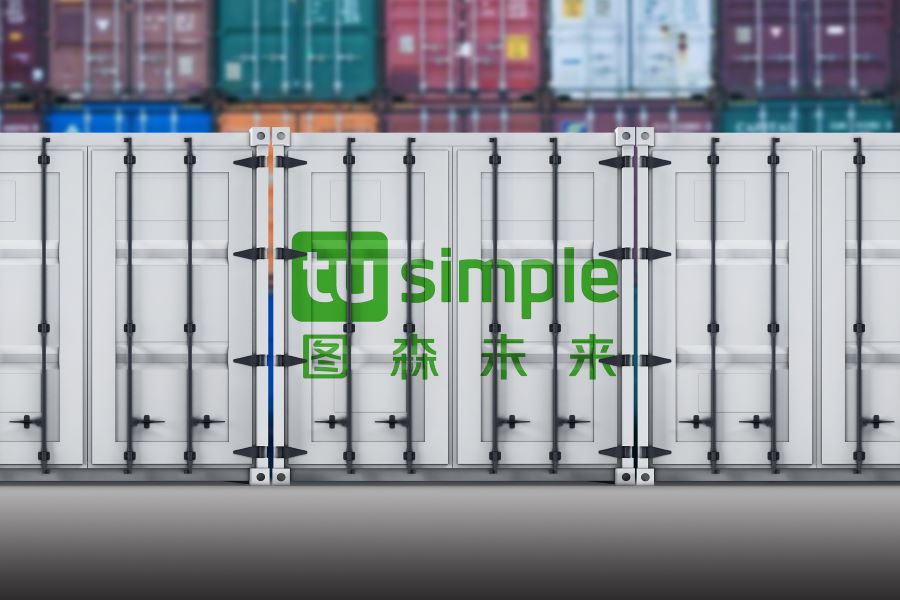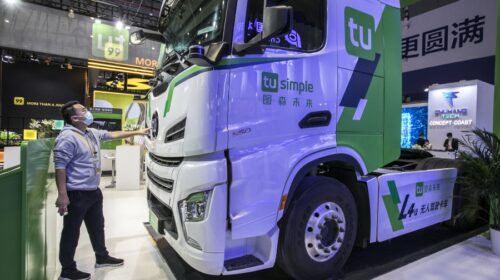Trucking Specialist TuSimple’s Latest Report Is Hardly Simple

Second-quarter results show company in rapid expansion mode, and increasingly placing its bets on U.S. market for self-driving trucks
Key points:
- TuSimple’s recent hiring spree and growing stable of major trucking partners show its autonomous driving technology is moving closer to commercialization
- Company’s highlighting of U.S. developments and muted discussion on China show it is rapidly moving its focus to the U.S.
By Doug Young
On the surface at least, autonomous truck driving specialist TuSimple Holdings Inc’.s (TSP.US) latest earnings report looks a lot like its name: quite simple. That view would say the report shows a company based in the U.S. and China that is rapidly ramping up its self-driving truck technology as it eyes a lucrative commercial rollout in the not-too-distant future.
But given the company’s complex position sitting in a sensitive spot between the U.S. and China, we probably need to read between the lines of this latest report to really see which way TuSimple’s wheels are rolling.
First of all, the way TuSimple released its latest report is relatively unusual. Rather than include the full financial information and highlights in the usual easy-to-access press release, it issued a short release briefly quoting CEO Lu Cheng on the company’s recent hiring spree. The only other thing in the release was a single sentence saying that a lockup period following the company’s April IPO will officially expire on Aug. 17, or about a week from now.
Perhaps that final sentence spooked investors, sparking a 10% drop in TuSimple shares on Friday after the announcement. After all, very few companies would point out the end to this usual lockup period so publicly, possibly leading some to speculate that TuSimple’s early investors were planning to dump shares en masse after Aug. 17.
An attempt to find the company’s actual earnings figures was equally cryptic. A link on the press release led to TuSimple’s investor relations page, where another click was required before finally finding the figures in a very technical-looking filing to U.S. securities regulator. A more prominent link on the investor relations page led to a special “letter to shareholders,” which looked far slicker and only briefly mentioned the latest financial information at the very bottom.
Perhaps most interestingly, the name “China” is contained only once in the 20-page shareholder letter, even though the company has a sort of dual headquarters in Beijing and San Diego. And even that single mention is quite generic, simply stating that “TuSimple is a global autonomous driving technology company, headquartered in San Diego, California, with operations in Arizona, Texas, China, Japan and Europe.”
Thus one of the first key takeaways we can start to infer is that the company is increasingly trying to de-emphasize its Chinese roots. That de-emphasis was highlighted further on the company’s earnings call, where Lu was asked about TuSimple’s latest hiring spree, which we’ll describe in more detail shortly.
“I guess, geographically, the vast majority of our hires are in the U.S., I would say close to probably 80%,” he said. “And we also are having teams building out in Europe, and then expansion of our technical teams in China as well.”
U.S. at Forefront
All of that said, we’ll pause briefly here to look at TuSimple’s actual results, which show a company that is suddenly expanding quite rapidly as its self-driving truck technology approaches the point where it could become commercially viable.
The company reported its revenue rose to $1.48 million in this year’s second quarter from $263,000 a year earlier, while its loss ballooned to $117 million from $28 million over the same period. The growing loss was due to ballooning expenses as the company embarked on a hiring spree that brought its R&D headcount to around 1,000 at the end of June, up 23% from three months earlier.
That R&D headcount makes up the big majority of its total headcount of about 1,220, showing the strong emphasis the company places on developing its technology.
TuSimple already has a very strong stable of partners, all western, that are helping to bring its technology to market. Those include backers Volkswagen and United Parcel Service (UPS), as well as partners Navistar and Scania. Most recently, the company announced a new partnership with logistics and fleet management specialist Ryder, also a U.S. company.
TuSimple also gives lots of ink in its shareholder letter to the rapid progress it is making in the U.S. The company uses mostly L4 technology, the second highest on a scale where L5 is considered fully autonomous driving.
“In Q2, we worked with Maryland and Virginia regulators to enable L4 autonomous commercial operations bringing the number of states that allow L4 commercial operations to 26,” it said. “Additionally, during Q2, Wyoming joined the NHTSA AV Test Initiative, bringing the total number of states allowing L4 autonomous testing to 44,” it added, referring to an initiative by the U.S. Department of Transportation to promote autonomous driving.
By comparison, discussion of the company’s progress in China is extremely limited in its latest materials. One of the few mentions of China says the company’s fledgling China operations may be subject to restrictions under a 2017 Cyber Security Law if the company is considered to be a “critical information infrastructure operator.”
So what does all of this mean? One of the biggest signals coming through seems to be the company’s growing emphasis on its U.S. operations that are far likely to become commercialized well before anything in China.
The way it has released the information also seems to indicate it wants to be low-key about this shift, which isn’t too surprising due to all the political tensions at the moment between the U.S. and China. The way things are going, one could even imagine the company could split off its much smaller and less-advanced China initiatives into a separate entity to avoid Beijing’s current disfavor of Chinese companies with sensitive technology listing in the U.S.
Then there’s the company’s actual stock, which has held up relatively well amid all the recent turbulence for Chinese shares trade in the U.S. Even after the Friday selloff, the stock now trades about 15% below its IPO price, a relatively modest decline compared with some other Chinese companies to recently list in the U.S. amid the recent regulatory turbulence.
Perhaps that signals that people are betting the company will ultimately choose the U.S. as its home, essentially siding with a market that has larger potential than China and is certainly far more predictable from a regulatory perspective.
To subscribe to Bamboo Works free weekly newsletter, click here





